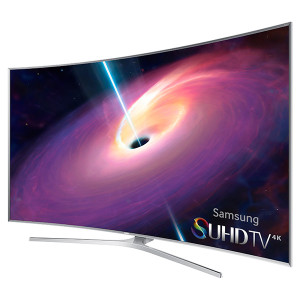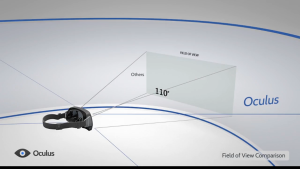As reported by Chelsea Cafiero, for Electronic House, back in January, Samsung announced a new line of what they are calling “Super Ultra High-Definition” televisions at this year’s Consumer Electronics Show (CES). The largest of the new sets is purported to be 89 inches, a whopping 226 cm. (see Figure 3)! The size alone eliminates it from being practical for many whose existing living space was not designed to accommodate a seven-foot TV. Of course, its elite nature indicates the limited audience it has in its marketing crosshairs. But that’s not the point. Not too long ago, the high price of plasma, LCD, and LED TVs made them economically impractical for all but the wealthy. Things have changed and now flat panel TVs have become affordable to a much broader spectrum of society.

In other words, if the history of television economics holds true, sooner, rather than later, that Super “ULTRA” HI-DEF 89″ television may well be affordable to the masses. But that shift in economic availability does not mitigate the spatial concerns imposed by an electronic device that is the size of a wall. The size makes it impractical, not the price. But lets just assume, for a minute, that in the time it takes for 80″ televisions to depreciate sufficiently to be available to mainstream society, there has been a global transformation of living space, facilitating their widespread adoption, that still does not eliminate the impending arrival of threat number one: Virtual Reality or VR technology.
The fact that VR represents the most significant threat to TV’s reigning position in the home is suggested by the new form factor of the latest televisions: they’re concave, or from a viewing perspective, curved inward (see Figure: 3). The reason for this dramatic redesign, according to one manufacturer, is to provide its audience with “Unparalleled Immersion” as they are “…drawn into the action [by] an immersive picture experience with off-angle viewing, making any seat the best seat in the house.” Hmmm…”Unparalleled immersion…drawn into…an immersive picture experience…”? Sounds like VR, and in fact it is: pseudo-VR. Which suggests that TV is trying to imitate a device that hasn’t even been fully developed. That’s not hopeful thinking, that’s reality.
Perhaps the strongest argument in support of VR’s claim as the future king of household entertainment is, ironically, its size. Not just the size of the device itself, but the size of the viewing experience that can be delivered by its relatively small headset apparatus. According to the Virtual Reality Times, the “Rift” and Sony’s Morpheus VR, have a field of view (FOV) that’s more than double the amount transmitted by most TVs (see Figure 4).[1]

This means that VR is currently able to deliver at least twice the amount of viewable content than any television on the market today; with a goal of one day providing a true-360 degree, fully immersive viewing experience. To achieve the same (FOV) with television, one would first need to build a round room. And then mount a dozen or so of those 80″ SUHD Samsungs on the walls until every spot is covered.
Of course, the TVs would have to be synched in such a way that would facilitate image continuity across screens. Oh, and we haven’t even talked about how to get the image reflected on the ceiling and the floor. Maybe you can just mount some more TVs, but be careful as you walk on them. They are fragile and expensive after all. Sounds ridiculous doesn’t it? Well it is, and that’s the point. It is ridiculous to think that TV will ever be able to reproduce true-VR immersion. Eventually, its FOV and physical limitations will reduce TVs status in the home to an antiquated, warped media viewing platform that your children will tell their grandchildren, (probably through a VR headset), about how it once ruled the world of home entertainment (see Figure 5).